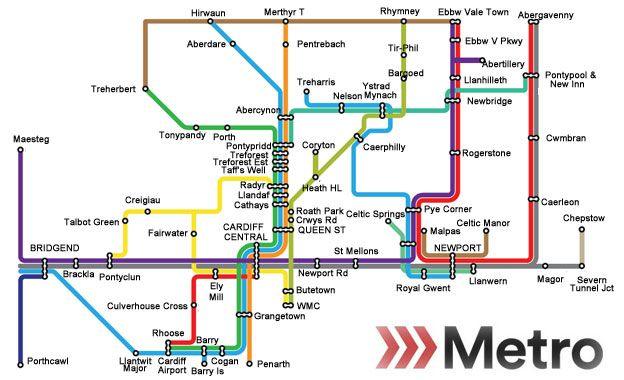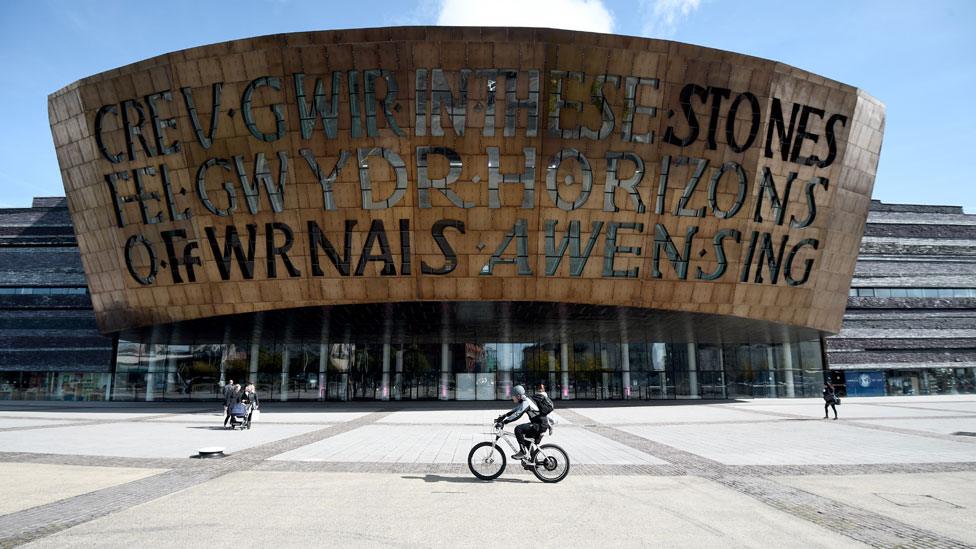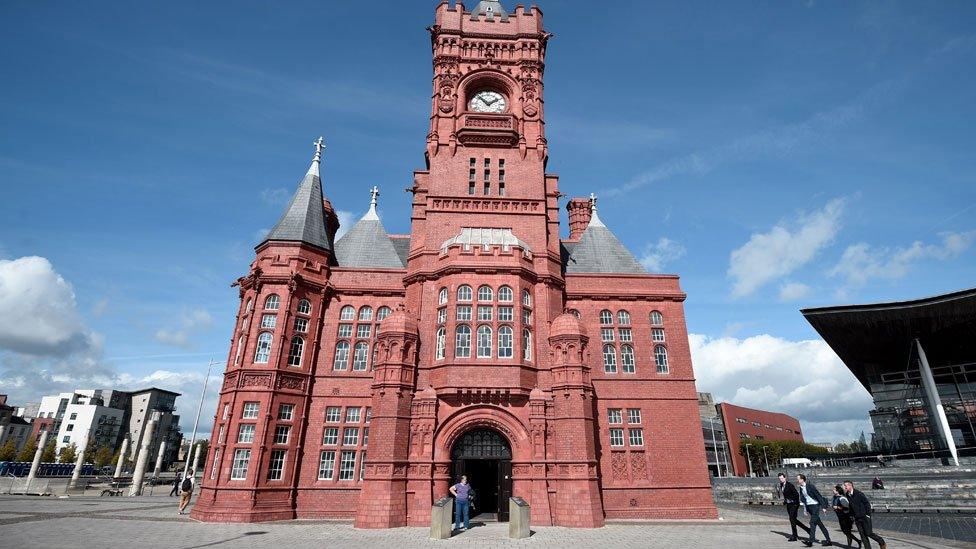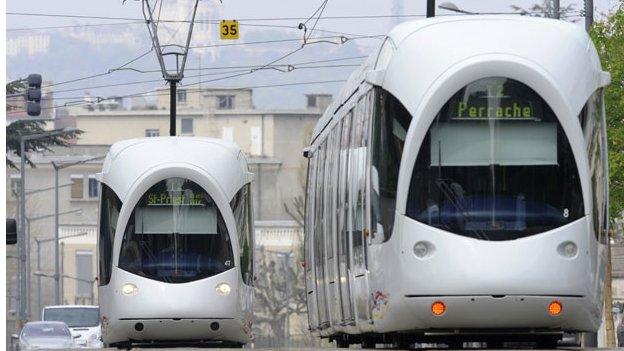Q&A: What does the Cardiff Capital Region deal mean?
- Published

What's new here that we haven't heard about before?
It's going to run over 20 years rather than the usual 30 years. The Welsh Government is also committing its share - £580m - for the first seven years of the project as it looks to kick it all off.
The UK Government's £500m share will be in instalments - and there will be checkpoints; it will be depend on whether the area's economy is improving.
Is it new money? Welsh Secretary Stephen Crabb admitted that £125m of Westminster's share had already been committed to Valleys electrification but that this was now part of a larger pot and a "much bigger and bolder ambition" to improve the wider region.
As well as transport, First Minister Carwyn Jones talked about using the money to develop skills so employers would continue to come. He said it would give councils possibly 10 times the amount for this than they might otherwise have expected.
The deal also talked about structures for doing things better - including a forum where business, councils and universities all work together, rather than looking at their own areas.
£734m has been earmarked for the Metro - how is this likely to be spent?
The idea of the Metro is to link together train and bus services that already exist so that they work more efficiently. But it's too early to say exactly where the money will go - light rail for instance - but there will definitely be some new stations.

The Metro has been talked about for years but Tuesday's announcement brings the £500m electrification of the Valley lines - agreed late in November 2014 - within the wider programme.
At the moment the transport map doesn't fully match where people work. For instance in the last 10 years there have been thousands of new jobs created to the west of Newport on business parks like Celtic Springs, Cleppa Park and Imperial Park. At the moment there are few transport links, so a new service - bus or rail - will be opened at Celtic Springs.

A sign at Newport railway station
When can we see work starting then?
The Metro is the deal's top priority and we can expect to see it start first - with some work within the next year. However visitors to Newport rail station might be under the impression it is already on the way - judging by the photo above, as part of a recent marketing campaign.
Last summer, ministers were cautioning against expecting an "all singing and all dancing" Metro by 2020.
There is another £495m for other projects - what else might we see?
Prof Colin Riordan, vice chancellor of Cardiff University said it was about developing a new economy for Wales based on innovation
This will bring together some of the cutting edge research already going on in the region's universities. Prof Colin Riordan, vice chancellor of Cardiff University said it was about innovation - including developing the next generation of computer chips.
"The economy of the future is one that depends on new technology, new ways of doing things and using the internet," he said.
With this in mind, there will be an "innovation district" and investment in the university's software academy, data innovation, a cyber security academy.
There is also an extra £50m - already announced - from the UK government for developing a compound semi-conductor centre in Cardiff, working on the next generation of electronics. This will be the 11th of the so-called Catapult projects, external which brings together scientists and businesses to work on innovations.
Housebuilding is also mentioned - and the 10 south Wales councils will work together to decide where new homes are needed to be to fit in with work and transport.

Will this all be about Cardiff though?
That's certainly not the plan. The 10 local authorities who have been driving the City Deal stretch from Chepstow to Maesteg and north to the Heads of the Valleys road.
The aim is that the whole area will become more prosperous with more better paid jobs. Critics doubt that and argue that it will help the economy along the M4 to the detriment of living standards in communities further away from the capital.
Andrew Morgan, leader of Rhondda Cynon Taf Council is lead for the local authorities on this and wants to ensure the whole region benefits from Cardiff's anticipated growth.
"We need to make sure the opportunities coming to Cardiff are also filtered up into the valleys and surrounding authorities," he told me.
"People can commute back and forth but this can also bring jobs into the valleys and if we can get good quality housing into the upper parts of the valleys it can regenerate those areas."
How does this all sit with the Great Western Alliance - with Cardiff, Newport and Bristol looking to work more closely together?
That alliance will continue but in a different way. It is less about infrastructure - road and rail - and more about bidding for investment and jobs.
Can Swansea and North Wales expect to see anything similar in future?
Swansea Bay City Region is certainly hoping to join the club. It has already put forward ambitious proposals for a £500m deal. It feels quite different from the Cardiff deal and its focus on transport. Instead the proposal from Swansea centres on a huge investment in ultra-fast broadband, technology companies and high value jobs.
North Wales has been looking to take advantage of economic developments from the "northern powerhouse" in northern England.
- Published15 March 2016

- Published30 June 2015
